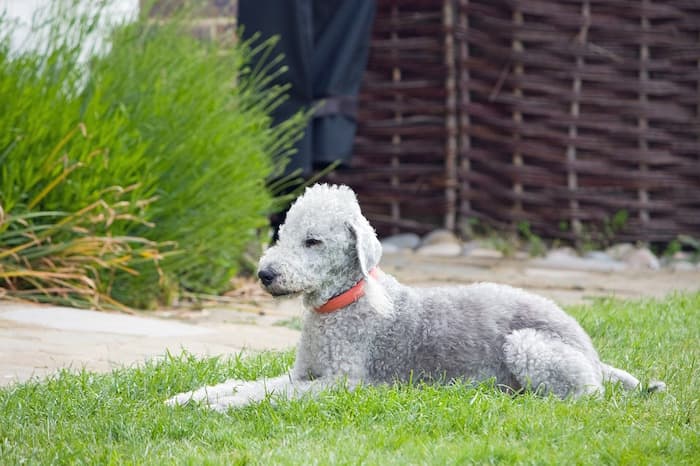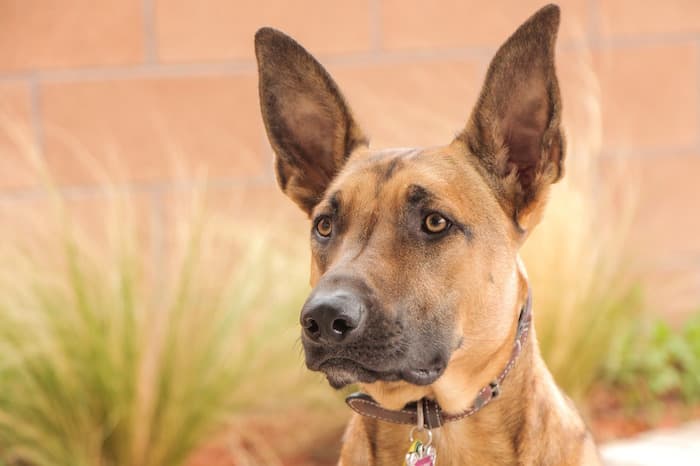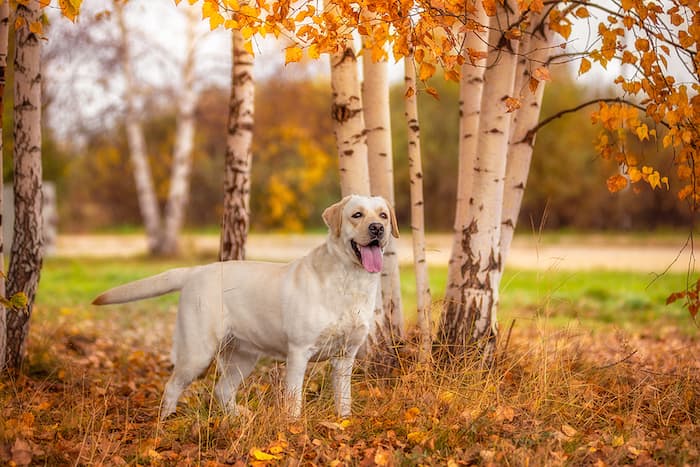Do you know what your dog is trying to tell you? It can be tough to figure out sometimes, but with a little practice, you can learn to read your dog’s body language like a pro! In this blog post, we will discuss six hacks that will help you learn your dog’s body language. By understanding what your dog is trying to say, you can create a better relationship with them and make sure they feel safe and comfortable around you. Let’s get started!
Here is the list of things you should pay attention to:
- Relaxed Approachable Body
- Eye contact
- Alert- Checking Things Out
- Ears
- Tail
- Yawing
Relaxed Approachable Body
One hack that will help you learn your dog’s body language is to look for relaxed and approachable body language. According to WholePet.health, this includes a soft, loose body with the weight evenly distributed. The head and ears may be slightly forward, but not tense or pulled back. The tail should be in a natural position, not stiff or held high. When you see this type of body language from your dog, it means they are feeling comfortable and confident around you.
Another indication of a relaxed and approachable dog is the presence of a “play bow.” This is when the dog lowers their front end to the ground while keeping its rear end high in the air. This is a friendly gesture that invites you to play!
If you see your dog displaying any of these relaxed and approachable behaviors, it’s a good sign that they feel comfortable around you and are open to interacting with you. On the other hand, if you see your dog start to tense up or pull back, it may be an indication that they are feeling uncomfortable or threatened. It is important to respect their space in these situations and give them time to relax.
Eye contact
Another hack for understanding your dog’s body language is to pay attention to their eyes. A dog that is feeling comfortable and confident will maintain eye contact with you. They may break away briefly to look at something else, but their gaze will quickly return to you.
In addition, the direction of a dog’s gaze can be telling. If they are looking directly at you, it may be an indication that they are interested in what you are doing or saying. However, if they are looking away from you or averting their gaze, it may be an indication that they are feeling uncomfortable or not interested in interacting. This is usually the case when a dog is being scolded or reprimanded.
It is also important to note that a dog’s eyes can give away its intentions. If a dog is looking directly at you with a hard, intense stare, it may be an indication that they are feeling aggressive or threatened. This is often referred to as the “hard eye” and should be avoided.
On the other hand, a soft, gentle gaze usually indicates that the dog is feeling friendly and submissive. This is sometimes referred to as the “soft eye” and is considered a good sign when interacting with new dogs.
Alert- Checking Things Out
If you’re out on a walk and your dog suddenly stops and starts sniffing intensely at something, it’s likely that they’re trying to figure out what it is. This is their way of being alert and checking things out. If you see your dog doing this, try to stay calm and let them take their time to investigate. Chances are, they’ll move on after a few seconds. But if they seem especially fixated on something, it might be worth taking a closer look yourself to make sure there’s nothing dangerous there.
To be safe, it’s always a good idea to keep an eye on your dog when they’re sniffing around, especially if you’re in an unfamiliar area. This way, you can be sure that they’re not getting into something they shouldn’t be.
Ears
A dog’s ears are another important part of its body language. The position of a dog’s ears can tell you a lot about how they’re feeling at any given moment. For example, if a dog’s ears are perked up and pointing forward, it usually indicates that they’re alert and interested in what’s going on around them. On the other hand, if a dog’s ears are flattened against its head, it may be an indication that they’re feeling scared or threatened.
In addition to the position of the ears, the movement of the ears can also be telling. If a dog’s ears are moving rapidly back and forth, it usually indicates that they’re excited or happy. However, if a dog’s ears are moving slowly or not at all, it may be an indication that they’re feeling tired or relaxed.
Tail
One hack that will help you understand your dog’s body language is to pay attention to their tail. The way a dog holds their tail can tell you a lot about how they’re feeling. For example, if they have a relaxed tail that’s hanging down, they’re likely feeling happy and content. But if their tail is high in the air and wagging rapidly, it means they’re excited about something. And if their tail is between their legs or hanging low, it’s a sign that they’re feeling scared or nervous.
When it comes to tail movement, there is one common misconception w. Many people believe that a dog wagging its tail always indicates that they’re happy. But this is not the case. While a wagging tail can indicate happiness, it can also be a sign of stress or agitation. So, it’s important to take into account the other cues your dog is giving off before making any assumptions about how they’re feeling.
Yawning
When humans yawn, it’s usually a sign of fatigue. But when dogs yawn, it can mean a few different things. If your dog suddenly yawns while you’re petting them, it’s likely a sign of relaxation and contentment. However, if they yawn during an intense moment, like when you’re about to take them for a walk, it might be a sign of excitement or anticipation.
On the other hand, if your dog yawns while you’re scolding them, it’s likely a sign of submissiveness or appeasement. This is their way of saying “I’m sorry” and trying to diffuse the situation. So, next time you see your dog yawning, take a moment to think about the context and see if you can decipher what they’re trying to tell you.
There you have it! Six hacks that will help you understand your dog’s body language. By understanding what your dog is trying to tell you, you can create a better relationship with them and make sure they always feel comfortable and safe. Thanks for reading!
Related Reading




